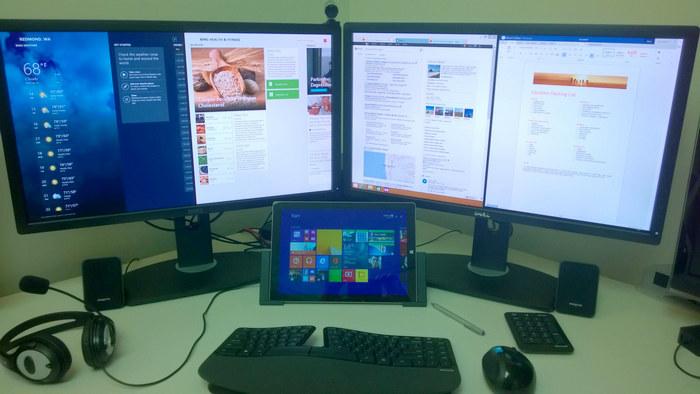Step by step: How to use a notebook as a secondary screen
Normally, our home work (and even in the office) is constituted by a notebook connected to one or more external screens.In this link I explained the steps to continue to connect to the notebook (actually, to any computer) a second monitor.
But is it possible to do the opposite?That is: can we use a notebook as a second screen?It seems a bit thrown from the hair, but not.For example, it could happen that the laptop did not have an adequate video output or, simply, that we missed the cable.Or that you would like to make a projection for several people.Or that you had a somewhat old laptop, joining dust in a closet;If you have Windows 8.1 or 10, you could use it as a secondary screen, which greatly improves our quality of life in daily work.
Now, there is a cat locked up.Notebooks have video outputs, not inputs.And we are also going to do it without cables?Rare.Yes, rare, but since computers are (at least so far) extremely ductile, we can do with them a lot of things that in principle do not seem possible.You just need to program them for that.
In the case of projecting a screen on another without using cables that technology is called Miracast and is a standard of the Wi-Fi alliance that was born relatively recently, in 2012.Simple, allows the video signal to be sent (and the input of the keyboard and the mouse, by the way) by Wi-Fi;without cables or anything.This works, for now, only with the new Windows and some Android phones (about Windows).In Linux the technology is being implemented average by Miraclest;Apple, of course, uses its own standard, AirPlay.
So, in principle, you will need your usual computer (it can be your notebook) and a second machine (that old notebook), both connected by Wi -Fi and with Windows 8.1 or 10.The experiment assumes that there are Windows 10 on both computers.
Step by step

In general, the story makes us think that this type of magic is achieved with a click.And yes, it will once be like that.But that usually takes at least a couple of decades.For example, it is true that today our phone connects to wireless networks without doing anything, almost instantaneously and completely transparent.But veterans will remember the time when to connect to an online service you had to put the phone tube in a wireless adapter (that is seen in The Matrix), and the transmission speed was about 50.000 times less than today's.
It is true that Miracast is not so in diapers, but it is not as simple as starting the two computers, pressing a keyboard shortcut and ready.So here is the step by step.We have two Notebooks with Windows 10 connected to the same Wi-Fi network (your home, basically).The first step is to prepare the old notebook that will function as a secondary screen.For that:
How to start the projection
If everything walked well, the notebook is now ready to receive the projection of the main team.For that, you have to take the following steps:
Some repairs
If everything goes well, you already have that notebook that seemed to do nothing as a second screen.The system, if it works, is agile and stable.But, as I anticipated, some issues must be taken into account, at least until this technology evolves.
First and above all: if any kind of message about hardware not compatible with Miracast appears in one of the machines, the method is likely not to work, or that it only works in one direction.For example, that this machine can serve as a secondary screen, but not project.
Second, it should be restarted after installing a new feature.In general, for these things, restart solves several conflicts, especially if the network is involved.
Third, you have to give time to the notebook that will function as a secondary screen to appear in the list of equipment to project.It can take up to thirty seconds, and we are a bit uninhabited so long.It seems a lie, but we are uninhabited.
Fourth, if you have a desktop PC connected to Wi-Fi you can also use a laptop as a secondary screen in this way.It is assumed that if it is connected by means of a cable (that is, by Ethernet) to the Wi -Fi router it should also work, but that depends on a number of factors and may fail.Anyway, it is rare that we still use cables.
Fifth, you can also try to project your Android screen.For that, you have to display the options from the menu at the top of the phone and choose smartView.The results vary according to the phone model and the Android version.
Sixth, the stirrup trick: yes, you can extend the screens using MIRACAST.That is, put the news (for example) on a secondary screen while working on the main. Para eso, una vez que estés conectado por Miracast, andá a Configuración> Sistema> Pantalla y abajo de todo vas a encontrar la opción de extender la pantalla.Windows is going to show number 1 and 2 that identify the primary and secondary screens on the same monitor, but the trick works perfectly also in Miracast.You can also do it at the time of connecting, clicking on Change the projection mode (as seen in one of the screenshots above).
In total, it is a relatively new technology and in my tests there was some turbulence, but if you have a notebook that you are not using and that has its windows a day, try these steps.You can get a pleasant surprise.








